|
How Important is Provenance with
Antiques?
by Bob Brooke
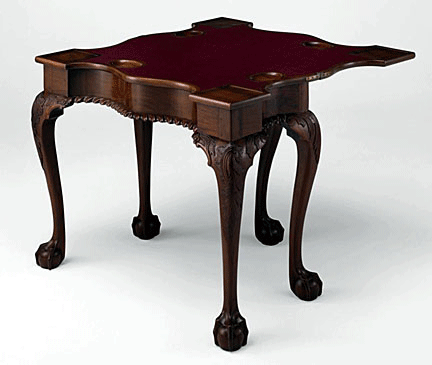 Ask
any high-end antiques dealer about provenance, and they’ll probably say
it’s imperative. And, yes, the history of antiques that are very old
needs to be researched to assure that the pieces are as old as their
owners or dealers say they are. But is provenance necessary beyond
1830—the date designated by an Act of Congress in 1930—and the start of
the Industrial Revolution? Ask
any high-end antiques dealer about provenance, and they’ll probably say
it’s imperative. And, yes, the history of antiques that are very old
needs to be researched to assure that the pieces are as old as their
owners or dealers say they are. But is provenance necessary beyond
1830—the date designated by an Act of Congress in 1930—and the start of
the Industrial Revolution?
Though the word provenance comes from the French provenir,
meaning “to come from,” its first use was in England during the 1780s.
Basically, it’s the chronology of the ownership of an historical object.
Originally, art collectors used the term in relation to works of art.
The primary purpose of tracing the provenance of an object is to provide
evidence of its original production by establishing, as much of its
later history as possible. It can also help to authenticate objects, in
this case antiques. Comparative techniques, expert opinions and the
results of scientific tests may also be used, but establishing
provenance is essentially a matter of documentation.
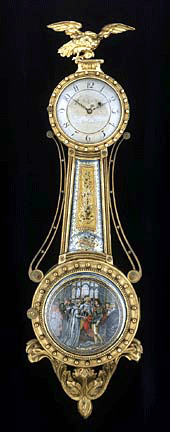 The
quality of the provenance of an important antique can make a huge
difference in its selling price which can be affected by the degree of
its certainty. What was the status of past owners as collectors and is
the evidence strong enough to support historical claims. Also, has the
object been illegally imported or taken from another country. And a
provenance doesn’t have to be lengthy or complicated to be of high
quality. The
quality of the provenance of an important antique can make a huge
difference in its selling price which can be affected by the degree of
its certainty. What was the status of past owners as collectors and is
the evidence strong enough to support historical claims. Also, has the
object been illegally imported or taken from another country. And a
provenance doesn’t have to be lengthy or complicated to be of high
quality.
With inherently valuable pieces, the advice and certification of an
antique export is a must. This doesn’t necessarily have to be an
appraiser. In fact, it should be someone who specializes in that
particular type of antique—furniture, glass, ceramics, silver, etc.
However, expert certification can mean the difference between an object
having no value or being worth a fortune.
Often a provenance can be as simple as a photograph of the item with its
original owner. Simple yet definitive documentation like that can
increase an object’s value a lot, but only if the owner was someone
famous. Many items sold at auction have gone far past their estimates
because of a photograph showing that object with a famous person,
including actors, musicians, artists, and politicians.
Provenance refers to the history of an object—who owned it, when and
where. It’s to an object what a deed trail is to a piece of land or a
building. While mortgage lenders require a deed/title search before
granting a loan, few antiques buyers do the same for objects they intend
to purchase, especially those in the four-figure and up category.

Identifying a piece of an antique, for example, can be tricky.
Generally, the piece’s identity determines its value. The true identity
of a piece can mean the difference between an item worth thousands of
dollars and another worth a fraction of that.
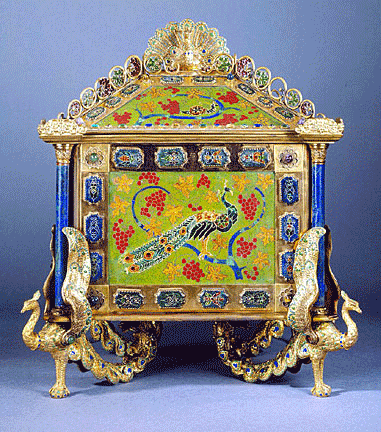 Given
the high stakes, proper identification of antiques might seem a task
solely for experts, but there are some methods that collectors can use
to get a ballpark valuation. Sometimes the authentication of a piece by
a signature or a maker’s label can offer a good bit of information about
who made the piece, where it was made, and its approximate age. Given
the high stakes, proper identification of antiques might seem a task
solely for experts, but there are some methods that collectors can use
to get a ballpark valuation. Sometimes the authentication of a piece by
a signature or a maker’s label can offer a good bit of information about
who made the piece, where it was made, and its approximate age.
An antique’s provenance can also be used as a guide to its authenticity
and quality.
The evidence needed for a good provenance comes in the form of
documentation. This can be in the form of estate inventories,
photographs, or documented inclusion in a museum exhibit or a respected
publication. Invoices and auction results from well-known and respected
antique dealers and auction houses are also useful. A good example is
George Washington’s ice cream maker.
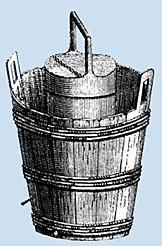 n
this case, legend says the Father of Our Country was known to have
purchased a "cream machine for ice" as early as 1784. An inventory of
his estate in the early 19th century noted two "Pewter Ice Cream Pots"
in the upstairs kitchen of Washington's Mount Vernon home. Now that’s
documented proof. n
this case, legend says the Father of Our Country was known to have
purchased a "cream machine for ice" as early as 1784. An inventory of
his estate in the early 19th century noted two "Pewter Ice Cream Pots"
in the upstairs kitchen of Washington's Mount Vernon home. Now that’s
documented proof.
Unfortunately, documentation doesn’t always mean there’s a lot of
information. All old George’s estate inventory says is that he owned to
pewter ice cream pots. It doesn’t say who made them or when he purchased
them and from whom. Most of the time the only provenance a piece may
have is that it has been within a certain family for several
generations, handed down through the family, so the original information
has been lost.
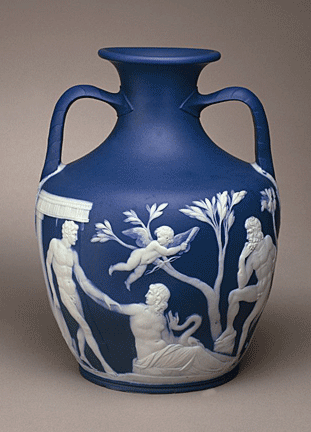 Complicating
matters are the auction houses which sell antiques. There are thousands
of them across the country. Their motto is caveat emptor, or “buyer
beware.” Auctioneers, under pressure to sell items for a high price,
aren’t necessarily accurate about the history of a piece Many antiques
dealers also lack the expertise to properly identify an item. An
exception is the high-end dealer selling antiques for four figures and
up. The high value of their pieces requires that they be as
knowledgeable as possible. Their wealthy customers expect nothing less.
But many middle-market dealers who want to sell items as quickly as
possible, have neither the time nor the inclination to research the
histories of objects they’re selling. Complicating
matters are the auction houses which sell antiques. There are thousands
of them across the country. Their motto is caveat emptor, or “buyer
beware.” Auctioneers, under pressure to sell items for a high price,
aren’t necessarily accurate about the history of a piece Many antiques
dealers also lack the expertise to properly identify an item. An
exception is the high-end dealer selling antiques for four figures and
up. The high value of their pieces requires that they be as
knowledgeable as possible. Their wealthy customers expect nothing less.
But many middle-market dealers who want to sell items as quickly as
possible, have neither the time nor the inclination to research the
histories of objects they’re selling.
While the provenance of an antique shouldn’t matter in determining its
value, in fact, it’s a significant part of an item’s price.
<
Back to Antiques Extra! Archives
Next Editorial > |
